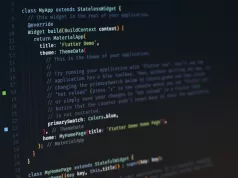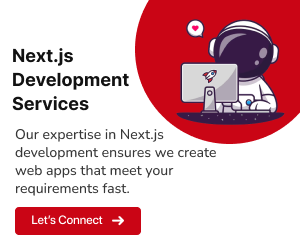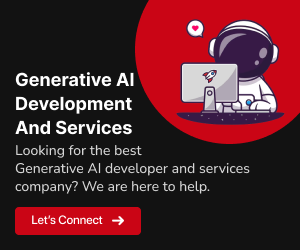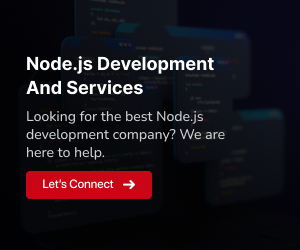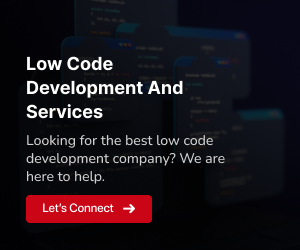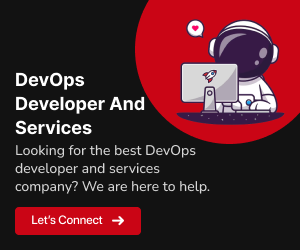Unveiling the Potential: Is Flutter Future-Ready for Enterprise Apps?
In the ever-evolving landscape of mobile application development, the quest for robust and efficient frameworks has never been more crucial. Flutter, Google’s open-source UI software development toolkit, has emerged as a significant player, offering versatile solutions to app creators worldwide. As businesses strive to meet the dynamic demands of the enterprise world, a pertinent question arises: Is Flutter poised to fulfill the requirements of modern enterprise applications? In this exploration, we delve deep into the capabilities of Flutter and analyze its potential to be the go-to choice for developing future-ready enterprise apps. Join us on this journey as we dissect the framework’s offerings and unveil its readiness for the challenges and innovations of the enterprise realm.
Read more: What Makes Flutter Ideal For the MVP Development Process?
What Is an Enterprise Application?
Enterprise applications, often referred to as enterprise software or enterprise-level software, are specialized software solutions designed to cater to the complex needs of large organizations, businesses, and enterprises. These applications are distinct from regular consumer or small-scale business applications due to their scale, functionality, and the specific challenges they address.
Key Characteristics of Enterprise Applications:
Enterprise applications, often referred to as enterprise-level software or enterprise solutions, are designed to meet the specific needs and demands of large organizations. These apps are characterized by their scalability, complex business logic, integration requirements with existing systems, stringent security measures, extensive customization options, and comprehensive user management capabilities. Understanding these key attributes is essential for evaluating why Flutter is well-positioned for the future of enterprise app development.
Scalability:
Enterprise apps are built to handle large volumes of data and users. They can scale both vertically (adding more resources to a single server) and horizontally (distributing the workload across multiple servers).
Complexity:
Enterprise apps often have intricate business logic, workflow processes, and integration requirements. They must accommodate various departments, roles, and hierarchies within an organization.
Integration:
They need to integrate seamlessly with existing systems, databases, and third-party services. Integration is crucial for data synchronization and maintaining a unified IT environment.
Security:
Enterprise applications prioritize data security and compliance with industry regulations. They implement robust security measures to protect sensitive information.
Customization:
Enterprises often require customization options to tailor the software to their specific needs. This may involve configuring workflows, data fields, or user interfaces.
User Management:
Enterprise apps must support various user roles and permissions. They enable administrators to manage user access and permissions effectively.
Reporting and Analytics:
Enterprises rely on data-driven decision-making. These apps include advanced reporting and analytics tools to provide insights into business performance.
Differences from Normal Apps:
Enterprise applications, in contrast to typical consumer-oriented apps, exhibit distinct characteristics and requirements. Understanding these disparities is pivotal when assessing whether Flutter is poised for the future of enterprise app development.
Scale:
Enterprise apps are designed for large-scale usage, serving potentially thousands of users simultaneously. Normal apps cater to individual users or small groups.
Complex Business Logic:
Enterprise apps often include intricate business processes, workflow automation, and complex logic to support diverse organizational needs. Normal apps are typically simpler in functionality.
Integration Requirements:
Enterprise apps require seamless integration with existing systems and databases within the organization. Normal apps may not have such integration demands.
Security and Compliance:
Enterprise apps prioritize robust security measures and compliance with industry regulations. Normal apps may not have the same level of security requirements.
Customization:
Enterprise apps offer extensive customization options to meet specific organizational needs. Normal apps are often standardized and less adaptable.
User Management:
Enterprise apps provide comprehensive user management features, including role-based access control. Normal apps may have basic user management.
Cost:
Developing and maintaining enterprise apps can be more costly due to their complexity and scale. Normal apps are generally more cost-effective.
In summary, enterprise applications are tailored to meet the unique demands of large organizations, emphasizing scalability, security, integration, and customization. Understanding these differences is crucial when evaluating whether Flutter is future-ready for enterprise apps.
Key Features of Flutter for Enterprises
Flutter, the open-source UI software development toolkit, offers a range of features that make it exceptionally well-suited for enterprise-level app development. In an era where businesses demand robust, scalable, and efficient solutions, Flutter’s unique attributes set it apart as the future of enterprise app development.
Cross-Platform Compatibility
Flutter’s primary strength lies in its cross-platform compatibility. Enterprises can build a single codebase and deploy apps across multiple platforms, including iOS, Android, web, and even desktop. This streamlines development efforts, reduces costs, and ensures consistent user experiences across different devices and operating systems.
Rapid Development
Flutter’s “hot reload” feature enables real-time code changes and updates without restarting the app. This significantly accelerates development cycles, allowing enterprises to iterate quickly, test new features, and respond promptly to evolving business needs.
Native Performance
Flutter compiles to native ARM code, resulting in near-native app performance. Enterprises can develop visually appealing and high-performing apps without compromising on speed or responsiveness.
Rich and Customizable Widgets
Flutter offers a wide array of pre-designed widgets that can be customized to align with an enterprise’s branding and functionality requirements. This allows for the creation of visually stunning and highly interactive user interfaces.
Strong Ecosystem
Flutter benefits from a thriving ecosystem, with a wealth of third-party packages, plugins, and libraries. Enterprises can tap into this ecosystem to expedite development and integrate essential features and functionalities seamlessly.
Enhanced Developer Productivity
With Flutter, developers can work on a single codebase, simplifying maintenance and reducing the need for specialized platform-specific developers. This enhances overall developer productivity and resource allocation.
Security and Compliance
Enterprise-grade security and compliance are non-negotiable requirements. Flutter offers robust security features and is well-suited for industries with stringent data protection regulations.
Cost Efficiency
Developing with Flutter often results in cost savings due to code reusability and shorter development cycles. Enterprises can allocate resources more efficiently while maintaining high-quality app delivery.
The key features of Flutter position it as the future of enterprise app development. Its cross-platform capabilities, rapid development, native performance, rich widgets, strong ecosystem, developer productivity enhancements, security features, and cost efficiency make it an ideal choice for enterprises seeking to build innovative and competitive applications.
Read more: Top 10 Flutter Apps You Must Make as a Beginner
Challenges and Solutions:
Adopting Flutter for enterprise-level application development brings both promise and challenges. Here, we explore the key challenges faced by enterprises when integrating Flutter into their development stack and provide insightful solutions to navigate these hurdles.
Skill Set Transition:
Challenge:
Enterprises might face a learning curve as their development teams transition to Flutter’s Dart programming language and widget-based UI development.
Solution:
Invest in comprehensive training programs and resources to upskill your development team. Leverage Flutter’s rich documentation and active community for guidance.
Integration Complexity:
Challenge:
Integrating Flutter apps with existing backend systems or third-party services can be complex.
Solution:
Employ middleware solutions and RESTful APIs to facilitate seamless integration. Consider using Flutter packages tailored for integration, like Firebase plugins or GraphQL libraries.
Security Concerns:
Challenge:
Ensuring enterprise-grade security standards in Flutter apps is paramount.
Solution:
Implement robust security measures, including data encryption, secure authentication, and regular security audits. Stay updated with Flutter’s security best practices and patches.
Scalability:
Challenge:
As enterprise apps grow in usage and complexity, ensuring scalability becomes essential.
Solution:
Design your Flutter app architecture with scalability in mind. Utilize Flutter’s state management solutions like Provider or Riverpod for efficient scaling.
App Performance:
Challenge:
Maintaining optimal performance, especially for resource-intensive apps, is a concern.
Solution:
Implement performance optimization techniques such as lazy loading, asynchronous processing, and efficient widget rendering. Leverage Flutter’s profiling tools for performance analysis.
By acknowledging these challenges and proactively adopting the provided solutions, enterprises can harness the full potential of Flutter for their app development needs.
Security and Compliance in Enterprise Flutter Apps
Security and compliance are paramount in the realm of enterprise applications. Flutter, as a versatile framework, offers robust solutions to cater to these critical aspects. Below, we delve into how Flutter addresses security and compliance requirements, making it a credible choice for enterprise-grade app development.
Secure Development Practices:
Flutter promotes secure coding practices through its design and architecture. It encourages developers to adopt secure coding guidelines, reducing vulnerabilities right from the development phase.
Data Encryption:
Flutter provides built-in support for data encryption and secure storage, ensuring that sensitive data is protected. It complies with industry standards for encryption algorithms, safeguarding user information.
Authentication and Authorization:
Enterprise apps often require strict authentication and authorization mechanisms. Flutter integrates seamlessly with identity providers, ensuring that only authorized personnel can access sensitive information.
Compliance with Industry Standards:
Flutter adheres to industry-specific compliance standards, including GDPR, HIPAA, and more. This adherence simplifies the process of developing apps that meet regulatory requirements.
Regular Updates and Patching:
Flutter’s active community and Google’s support ensure that security vulnerabilities are promptly addressed. Regular updates and patch releases keep enterprise apps resilient against emerging threats.
By choosing Flutter for enterprise app development, organizations can confidently navigate the complex landscape of security and compliance, ensuring that their apps are not only feature-rich but also safe and compliant.
Cost and Resource Efficiency with Flutter
Cost-effectiveness and efficient resource allocation are paramount concerns for enterprises. Flutter’s unique features and capabilities contribute significantly to cost savings and resource efficiency. In this section, we’ll explore how Flutter can be a game-changer in terms of finances and resource management for enterprise app development.
Cross-Platform Development:
One of Flutter’s primary advantages is its cross-platform development capabilities. With a single codebase, you can target both Android and iOS platforms, reducing development time and costs significantly.
Rapid Development:
Flutter’s hot reload feature enables real-time code changes and immediate feedback. This accelerates the development cycle, allowing you to bring your enterprise apps to market faster, thereby saving both time and money.
Reusable Widgets:
Flutter’s widget-based architecture promotes code reusability. You can create custom widgets and reuse them across various parts of your app or even in different projects. This reduces development effort and ensures consistency in your apps.
Open-Source Ecosystem:
Flutter boasts a vibrant open-source ecosystem with a multitude of packages and plugins. Leveraging these resources can save you the effort of building functionalities from scratch, making your development process more efficient.
Maintenance and Updates:
Flutter simplifies the maintenance of your apps. With a single codebase, you only need to manage one set of code, reducing the resources required for ongoing maintenance and updates.
Resource Allocation:
Efficient resource allocation is essential for enterprise projects. Flutter’s streamlined development process means you can allocate your development team more efficiently, leading to optimized resource utilization.
By adopting Flutter, enterprises can unlock cost savings and resource efficiency, ultimately achieving their app development goals without stretching their budgets. Flutter’s advantages make it a strategic choice for cost-conscious enterprises.
Read more: Top 15 Flutter App Development Tools To Use In 2024
Charting the Enterprise App Future with Flutter
As we conclude this journey through the world of enterprise app development, it’s evident that Flutter is not merely a framework but a transformative force. Its unique blend of features, adaptability, and commitment to security and scalability make it the future-ready choice for enterprises seeking to thrive in the digital landscape. With Flutter at the helm, enterprises can embark on a path where innovation knows no bounds, costs are optimized, and user experiences reach new heights. So, take a leap into the future with Flutter – where enterprise app development is not just a task but an extraordinary opportunity.







